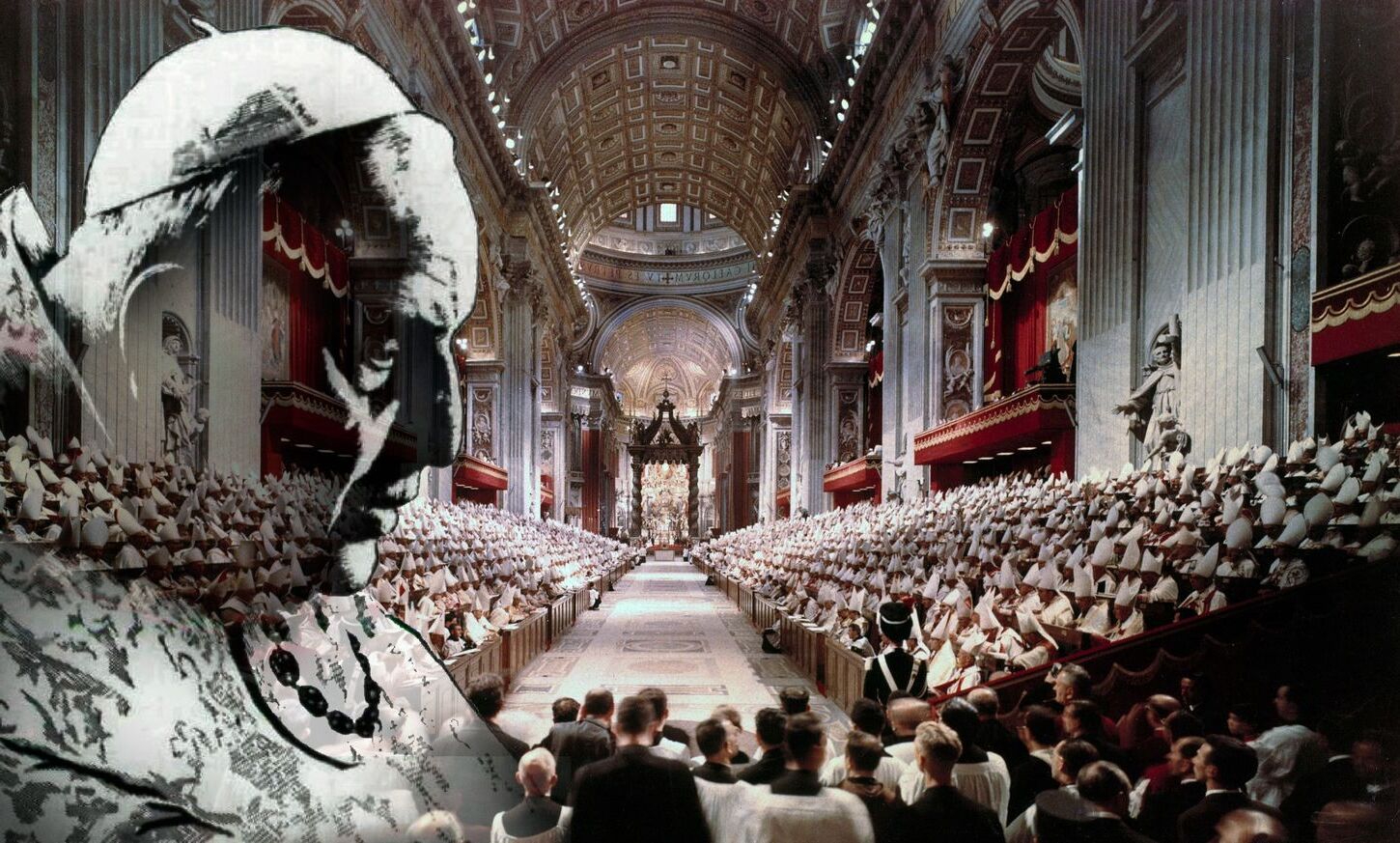
What was the Second Vatican Council? The Second Vatican Council, often called Vatican II, was a major event in the Catholic Church's history. Held from October 11, 1962, to December 8, 1965, in Vatican City, it aimed to modernize Church practices and renew the Christian faith. Pope John XXIII convened the council to address the challenges of a rapidly changing world. Over four sessions, bishops, theologians, and observers from various Christian denominations gathered to discuss and implement reforms. The council produced sixteen key documents that reshaped the Church's approach to liturgy, ecumenism, and the role of the laity.
The Beginning of the Second Vatican Council
The Second Vatican Council, often called Vatican II, was a monumental event in the history of the Catholic Church. Convened by Pope John XXIII, it aimed to rejuvenate the Church and address the challenges of a modern world.
-
Announcement and Purpose: Pope John XXIII announced the council on January 25, 1959, just three months after his election. His goal was to renew the Christian faith and invigorate the Church’s mission in a rapidly changing world.
-
Opening Speech: The council began on October 11, 1962, with Pope John XXIII’s speech, Gaudet Mater Ecclesiae, which emphasized spiritual renewal and ecumenism.
-
Duration and Sessions: Vatican II met in four sessions from 1962 to 1965, each lasting between 8 and 12 weeks, totaling 169 General Congregations.
-
Participants: The council included all Catholic bishops and certain other church dignitaries. Observers from major Christian churches and communities separated from Rome, as well as auditors, were also invited.
Preparatory Work and Key Documents
The groundwork for the council was extensive, involving preparatory commissions and the creation of significant documents that would shape the future of the Church.
-
Preparatory Commissions: Initial preparations were done by the Curia. Once the council began, members from around the world joined, bringing more progressive viewpoints.
-
Key Documents: Vatican II produced sixteen documents, including four constitutions, nine decrees, and three declarations, covering topics from revelation to the role of the laity.
-
Dogmatic Constitution on Divine Revelation: Dei Verbum emphasized the importance of Scripture and tradition in understanding God’s revelation, affirming the value of Scripture for salvation.
-
Dogmatic Constitution on the Church: Lumen Gentium described the Church as the people of God and justified changing the defensive stance that had characterized Catholic thought since the Protestant Reformation.
-
Constitution on the Sacred Liturgy: Sacrosanctum Concilium allowed vernacular languages in the liturgy and emphasized community prayer, recognizing the richness of various rites.
-
Pastoral Constitution on the Church in the Modern World: Gaudium et Spes called for dialogue with contemporary society, acknowledging that science and culture have things to teach the Church.
Landmark Changes and Reforms
Vatican II brought about several landmark changes, particularly in areas like ecumenism, interreligious dialogue, and the role of the laity.
-
Landmark Changes: The council emphasized ecumenism, interreligious dialogue, and the role of the laity in Church life.
-
Ecumenical and Interreligious Relations: The council encouraged cooperation and understanding among different Christian denominations and non-Christian religions.
-
Role of the Laity: Vatican II highlighted the importance of the laity, calling for their active participation in the Church’s life and mission.
-
Liturgical Reforms: Significant liturgical reforms included the use of vernacular languages and a more participatory approach to worship.
-
Religious Freedom: The council declared religious freedom a fundamental human right, as reflected in Dignitatis Humanae, emphasizing freedom of conscience and worship.
-
Non-Christian Religions: Nostra Aetate acknowledged the value of non-Christian religions, encouraged dialogue, and condemned anti-Semitism and racism.
Media, Social Communication, and Pastoral Duties
Recognizing the importance of modern communication and the pastoral role of bishops, Vatican II issued several decrees to guide the Church in these areas.
-
Media and Social Communication: The council recognized the importance of media in modern society, encouraging the Church to use these tools for evangelization and education.
-
Bishops’ Pastoral Duties: Emphasizing bishops as spiritual leaders, the council issued a decree highlighting their responsibility to guide their flocks and promote unity.
-
Ecumenism: Encouraging dialogue and cooperation among Christian denominations, the council recognized the importance of unity among Christians.
-
Eastern-rite Churches: A decree recognized the unique traditions of Eastern-rite churches, promoting unity and cooperation with the Latin Church.
-
Priestly Ministry: Emphasizing priests as spiritual guides, the council highlighted the importance of priestly formation and ongoing education.
Religious Life, Missionary Activity, and Lay Apostolate
Vatican II also addressed the importance of religious life, missionary activity, and the apostolate of the laity, encouraging active engagement in the Church’s mission.
-
Religious Life: A decree recognized the importance of monastic and other forms of consecrated life, encouraging a life of prayer, service, and witness.
-
Missionary Activity: Emphasizing the importance of spreading the Gospel, the council called for greater efforts in evangelization and mission.
-
Apostolate of the Laity: Recognizing the laity’s vital role, the council encouraged lay people to engage in various forms of apostolate and service.
Impact and Legacy of Vatican II
The impact of Vatican II on Church life has been profound, leading to a period of renewal and transformation that continues to shape the Church today.
-
Impact on Church Life: The council’s documents and deliberations profoundly impacted nearly every area of Church life, felt by the early 1970s.
-
Legacy and Impact: Vatican II is regarded as one of the most significant events in Catholicism since the Protestant Reformation, leading to ongoing renewal and transformation.
-
Year of Faith: To mark the fiftieth anniversary of Vatican II, Pope Benedict XVI declared a "Year of Faith" from October 2012 to November 2013.
-
Historical Context: The council took place during significant social and political change, with Pope John XXIII recognizing the need for a new response from the Church.
-
Pope John XXIII’s Vision: He envisioned a pastoral council to renew the Christian faith and adapt Church practices to new circumstances.
-
Pope Paul VI’s Leadership: After Pope John XXIII’s death, Pope Paul VI continued the council’s work, ensuring its deliberations and documents were completed and promulgated.
Controversies, Continuity, and Modern Church Life
Despite its significant impact, Vatican II faced controversies and debates about its continuity with Church tradition, yet its legacy continues to shape modern Church life.
-
Controversies and Criticisms: Vatican II faced various controversies, with some traditionalists opposing certain reforms and others questioning its continuity with Church tradition.
-
Historical Account: The historical account of Vatican II is complex, involving theological readings and understanding the historical context in which the council was produced.
-
Continuity and Discontinuity: Debates about the council’s continuity with Church tradition persist, with some seeing it as a significant change and others as a continuation of ongoing development.
-
Glossary of Technical Terms: The council’s documents often used technical terms and abbreviations, requiring a glossary to help readers understand the teachings.
-
Legacy in Modern Church Life: Vatican II’s emphasis on ecumenism, interreligious dialogue, and lay participation continues to shape the Church’s mission and practices today. The council’s documents remain important and normative texts of the Magisterium, guiding the Church as it navigates the complexities of the modern world.
Lasting Impact of Vatican II
The Second Vatican Council was a game-changer for the Catholic Church. It brought fresh air into Church practices, making them more relatable to modern society. From allowing vernacular languages in the liturgy to emphasizing the role of the laity, Vatican II made significant strides. It also promoted ecumenism and interreligious dialogue, fostering better relationships with other faiths. Documents like Lumen Gentium and Gaudium et Spes continue to guide the Church's mission today. Despite some controversies, the council's emphasis on spiritual renewal and engagement with contemporary issues remains influential. Its legacy lives on, shaping the Church's approach to worship, community, and global outreach. Vatican II wasn't just a moment in history; it set the stage for ongoing transformation and dialogue within the Church.
Was this page helpful?
Our commitment to delivering trustworthy and engaging content is at the heart of what we do. Each fact on our site is contributed by real users like you, bringing a wealth of diverse insights and information. To ensure the highest standards of accuracy and reliability, our dedicated editors meticulously review each submission. This process guarantees that the facts we share are not only fascinating but also credible. Trust in our commitment to quality and authenticity as you explore and learn with us.


